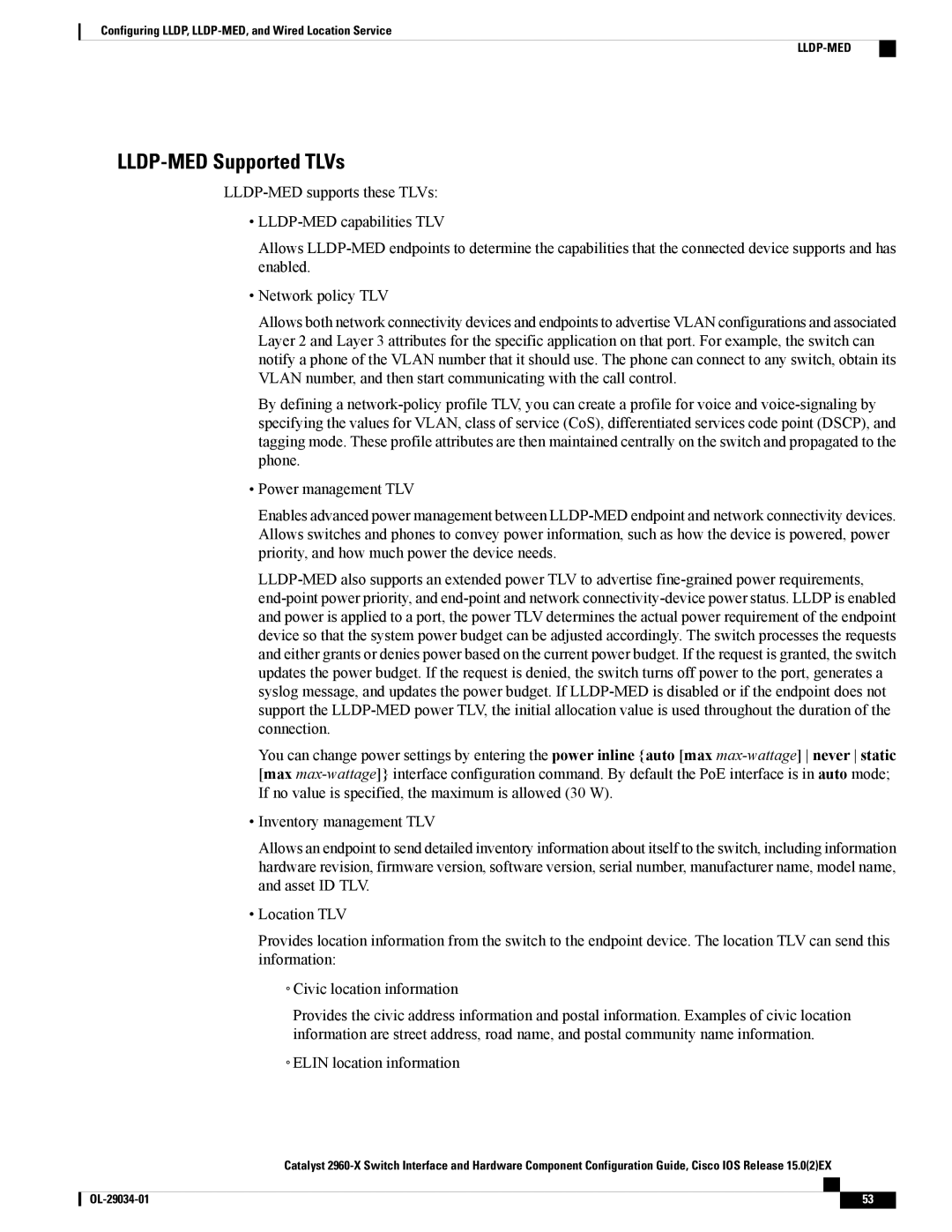
Configuring LLDP,
LLDP-MED Supported TLVs
•
Allows
•Network policy TLV
Allows both network connectivity devices and endpoints to advertise VLAN configurations and associated Layer 2 and Layer 3 attributes for the specific application on that port. For example, the switch can notify a phone of the VLAN number that it should use. The phone can connect to any switch, obtain its VLAN number, and then start communicating with the call control.
By defining a
•Power management TLV
Enables advanced power management between
You can change power settings by entering the power inline {auto [max
•Inventory management TLV
Allows an endpoint to send detailed inventory information about itself to the switch, including information hardware revision, firmware version, software version, serial number, manufacturer name, model name, and asset ID TLV.
•Location TLV
Provides location information from the switch to the endpoint device. The location TLV can send this information:
◦Civic location information
Provides the civic address information and postal information. Examples of civic location information are street address, road name, and postal community name information.
◦ELIN location information
Catalyst
53 |
